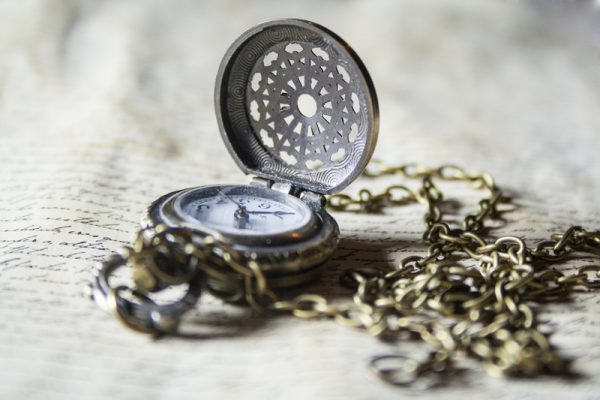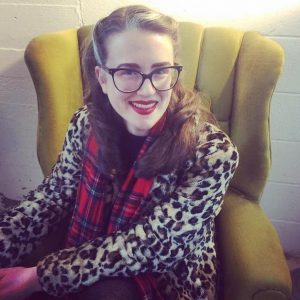What things do we keep?
When you move, what do you choose to take with you? What do you want close at hand?
And what have you left behind in the various places you’ve called home? Are these physical things, or are they memories, feelings, ideas?
These were the questions at the heart of our event The Things We Keep, hosted by The Blue Castle: Conversations on Women, Culture, and the Spaces of the Imagination and the Saltwater Stories research group. Inspired by themes of migration, memory, and identity, and with a particular interest in the multifaceted manifestations of our journeys, we invited anyone interested to bring the things they keep, and the stories that made them meaningful. A show-and-tell for adults, if you will.
While the premise of our event was quite simple (we wanted to hear your stories!), the conversation generated was anything but. It was insightful, moving, engaging, often humorous, and wonderfully complex.
On March 8, 2018, we eagerly gathered at the MMaP Gallery, Arts and Culture in St. John’s, Newfoundland, stories ready to share. After taking our seats in a cozy, circular seating arrangement — all the better for seeing and hearing each other — we introduced ourselves and embarked on our storytelling journey. Our guests ranged from individuals who had spent the majority of their lives in St. John’s, to people who had made a “home” in many places around the world. The generational diversity of our group, too, led to some lively repartee about our respective stories.
While there was a wide array of things, including journals, seashells, cooking materials, books, poems, christening outfits, and even a 1946 car manual, notable threads connected each and every one.
Stories of place
The connection between things and place was central to many of our guests’ stories. One guest, for example, shared a poignant story of her time in New Orleans. With brightly coloured Mardi Gras beads jangling and sparkling around her neck, she recalled the undeniable sense of place cultivated through food, conversation, and comradery with her neighbours. While the beads were things she had kept, it was the stories of generosity and the memories of place that she would always carry.
Stories of the past
The significance of the past was an underlying theme to each story. The things we keep necessarily have a history — of our own personal journeys, or our family histories, or collective histories of culture, religion, and literature. For example, one guest brought a small Catholic cross given to her by her mother — an heirloom to keep her late grandfather’s spirit close during times of conflict and uncertainty. Despite being somewhat skeptical of religion, she developed a curious attachment to this cross. By keeping it close through her journeys around the world, she came to realize that its significance was not so much in the thing itself as in the histories, feelings, and memories that it embodied.
Unwrapping objects in a box from green tissue paper, another guest revealed two small artifacts — a fractured piece of a pipe, and a clear, slightly cracked inkpot. On the paper was a hand-drawn map, showing where she had dug these mysterious, delicate objects from the ground many moons ago (which interestingly, was only about a 10-minute walk from where our event was held). She speculated where they might have come from, who might have owned them, why they had ended up buried in the earth. In fact, it is through speculation that these things came to have a story, and an imagined history. She also pondered what we would find if we kept digging, what other things could we unearth, what other (hi)stories could we conjure? Surely, she suggested, you could write a book about it all.
Stories of our selves
Another major theme was the stories of our selves, past and present. One guest brought a journal from her teenage years that brought back humorous memories of romantic optimism, but also made her (and via discussion, the whole room) wonder about the nature of our selves over time. Do we recognize the self that exists within a journal’s bounds? When we move/change/grow, do we ever remain the same? What of our public and private selves? For whom do we write and represent the self? Is it for ourselves or others? For whom do we change? What happens when our journeys create multiple, fragmented selves? And what would it take to piece them back together?
Another guest recalled her days as a youth in a military family, where multiple moves across borders meant things in the physical sense were not easily transported. Aside from her mother’s all-important dishes, there were few belongings they kept on their journeys. And yet, years later, looking at the designs on these dishes, she realized that one of the things she “kept” was colour. Some of her favourite colours — bright lime greens, purples, oranges — reminded her of the mod styles with which she grew up, and which painted the borders of her mother’s prized dishes. Some things we keep might not be tangible in the traditional sense but can nevertheless seep into our sensorial experiences; they create a residual, bodily affect upon our moving, changing, multifaceted selves.
Each of the stories shared that evening illuminated the role of things within our journeys through place, through time, and through selves. These keepsakes act as reminders of the past, of family, of home, of feelings, of who we have been and who we could be. As we move across borders, between houses, beneath land, over waters, perhaps what we keep represents a glimmer of continuity in the sometimes-unpredictable journeys of our ever-changing, ever-complex lives.
If you kept digging, what could you find? What would you discover?
If you kept digging, you could write a book with the countless stories of the things you keep.
♦ ♦ ♦
LESLEY BUTLER is a Master of Gender Studies candidate at Memorial University. She has research interests in life writing, memory, postcolonial theory, feminist geography, and women in film. Her current research examines the films of Julie Dash through an auto/biographical lens, focusing particularly on how the self is (re)written alongside representations of race, identity, place, and history.


What a wonderful story. Reading this has given me all kinds of ideas of things to write about. Thank you so much Lesley, for sending this to Allyson, and thank you, Allyson, for sharing it. I’m sure you knew it would inspire us.